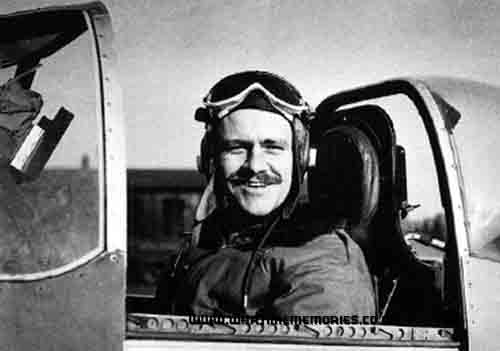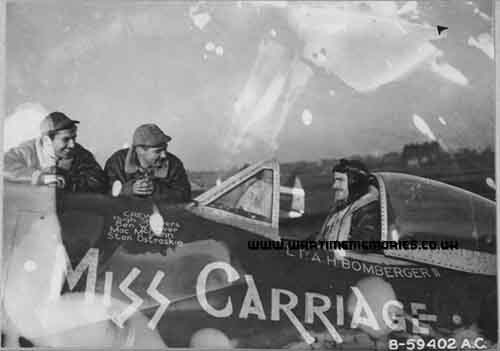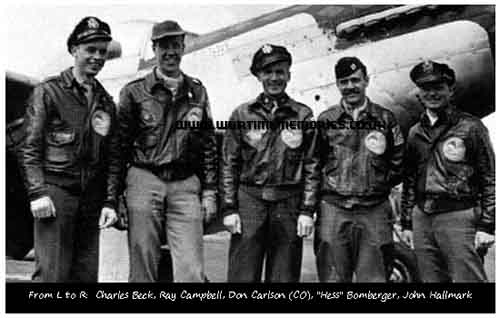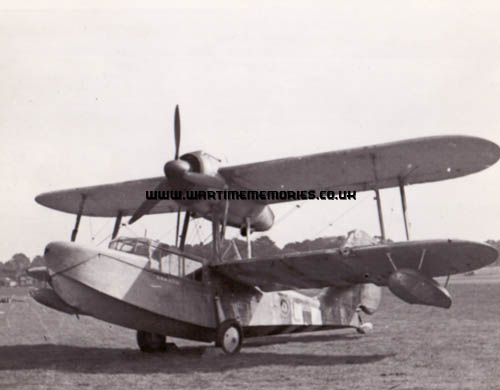|
|
|
RAF Martlesham Heath
Commissioned on January 16, 1917 the new aerodrome started work as the Aircraft Testing Flight.
After the First World War both military and civil aircraft were tested and in March 1924 the station changed its name to the Aeroplane and Armament Experimental Establishment, (A&AEE) which today is located at Boscombe Down.
The RAFs first parachute section was formed at Martlesham Heath commanded by Flt Lt John Potter, inventor of the Potter Parachute. Martlesham Heath gained world- wide acclaim but the outbreak of World War Two necessitated a move of the A&AEE back to Wiltshire.
During the winter of 1939-40 the first Defiant Squadron, No 264, arrived followed by almost all the squadrons of No 11 Group, Fighter Command which were in the Battle of Britain. Many well-known pilots of that era, including Bader, Standford-Tuck, and Peter Townsend, stayed at Martlesham.
After the Battle of Britain, Hawker Typhoons, arrived to continue the attack on occupied Europe. In 1943 the United States Army Air Corp and three squadrons of P47 Thunderbolts replaced the Typhoons. Later the Thunderbolts were replaced by P51 Mustangs, which stayed until the end of World War Two.
The airfield closed in March 1963. Many of the RAF buildings still stand but others have been lost. The site is now partly covered by housing and commercial development, and is home to British Telecom's research and development centre, Adastral Park. RAF links remain in some of the road names and the public house named "The Douglas Bader"
The control tower has been restored and now houses The Zone Control Tower Museum.
3rd Sept 1939 Experimental radar
22nd October 1939 On the Move
22nd February 1940 On the Move
28th February 1940 Detachment
23rd March 1940 New Hurricanes
10th May 1940 Move to the south
13th May 1940 Squadron reunited
16th May 1940 Missing on patrol
17th May 1940 Sortie to France
2nd June 1940 Big Wing
19th June 1940 Convoy protection
19th June 1940 Night fighter success
27th June 1940 Trial with Hurricanes
12th July 1940 Hurricane pilot missing
15th August 1940 Airfields attacked
4th Sept 1940 Night defence patrols
September 1940 Battle of Britain reminiscences
30th Sept 1940 Re-equipped
8th Oct 1940 On the move
30th Oct 1940 Recuperation
23rd February 1941 Move
3rd April 1941 Move to the south
5th April 1941 On the Move
17th May 1941 Shot down
30th May 1941 Defence
23rd June 1941 New role
23rd June 1941 Ground attack role
29th July 1941 Renewal
23rd Aug 1941 Aircraft Lost
27th Aug 1941 Aircraft Lost
7th October 1941 Ground attack role
Nov 1941 Defence
14th December 1941 Recuperation
10th Mar 1942 Raid
2nd May 1942 Back to the front line
29th June 1942 Moved on
15th July 1942 Crash due to ice
17th July 1942 Return to Hornchurch
25th August 1942 New Squadron formed
1st Sep 1942 Posting
2nd Sep 1942 Personnel Arrive
4th Sep 1942 Postings
5th Sep 1942 Postings
6th Sep 1942 Postings
8th Sep 1942 Posting
9th Sep 1942 Posting
10th Sep 1942 Aircraft Arrives
11th Sep 1942 Commanding Officer
12th Sep 1942 Aircraft
13th Sep 1942 Discussion
14th Sep 1942 Postings
15th Sep 1942 Posting
16th Sep 1942 Postings
17th Sep 1942 Postings
18th Sep 1942 Aircraft
19th Sep 1942 Spares
20th Sep 1942 Interview
22nd Sep 1942 Visit
23rd Sep 1942 Postings
23rd September 1942 Move to the South of England
24th Sep 1942 Lecture
26th Sep 1942 Postings
27th September 1942 Prepared for overseas
28th Sep 1942 Training
29th Sep 1942 Co-operation Course
30th Sep 1942 Aircraft Lost
30th Sep 1942 Postings
1st October 1942 Pilots transfer to air-sea rescue
3rd October 1942 Pilots train with the army
4th October 1942 Army Officers fly with RAF
5th October 1942 Gunnery training
6th October 1942 Talk on Sabre engines
12th October 1942 Second hand aircraft collected
14th October 1942 Army cooperation training
18th October 1942 Typhoon pilots train on Hurricanes
22nd October 1942 Bomb-equipped Typhoons arrive
23rd October 1942 Test flight with bombs
26th October 1942 Bombing range training begins
3rd November 1942 Visit by Air Marshall
6th November 1942 Airfield unsuitable for ops
8th November 1942 Formation flying practice
9th November 1942 Aircraft demo to US Army
10th November 1942 Practice bombing resumes
13th November 1942 C/O survives accident on take-off
14th November 1942 Practice bombing rated 'excellent'
16th November 1942 Bombing practice
17th November 1942 Airfield still unsuitable
19th November 1942 Pilot lost at sea
20th November 1942 Naval bombing exercise
24th November 1942 More naval bombing practice
25th November 1942 Engine failure
29th November 1942 New aircraft collected
1st December 1942 Failed to return
2nd December 1942 Farewell Dance
4th December 1942 Airfield a sea of mud
5th December 1942 Lost in the Channel
5th December 1942 C.O. injured by horse-play
7th December 1942 Move into mud
3rd January 1943 Squadron's first operation
30th January 1943 Aerodrome abandoned
31st January 1943 Gale
17th February 1943 Naval attack practiced
19th February 1943 Pilots break into airfield
24th February 1943 Fog Lifts
25th February 1943 Inspection
27th February 1943 Preparations for Exercise Spartan
28th February 1943 Move to Exercise base
1st March 1943 Into position for Spartan
20th March 1943 Crash on Landing
5th April 1943 On the move
29th April 1943 Relocated for training
7th May 1943 Postings
14th May 1943 Attack ops directed from the ground
15th May 1943 Relocated
5th June 1943 Moved again
10th June 1943 Lucky escapes
12th June 1943 Rescued from the drink
13th June 1943 Gunnery course
20th June 1943 Killed on test flight
21st June 1943 Escort duty
30th June 1943 Rhubarbs
July 1943 On the move
11th July 1943 Taken PoW
14th July 1943 Night flying duties
20th July 1943 Attack on a train
27th July 1943 Attack on Dutch aerodrome
19th August 1943 Airfield closed
5th September 1943 Unexplained loss of Tiger Moth
4th December 1943
15th February 1944 Refitting
26th November 1944 Bad weather
If you can provide any additional information, please add it here.
|
Those known to have served at RAF Martlesham Heath during the Second World War 1939-1945. The names on this list have been submitted by relatives, friends, neighbours and others who wish to remember them, if you have any names to add or any recollections or photos of those listed,
please
Add a Name to this List
|
|
|
The Wartime Memories Project is the original WW1 and WW2 commemoration website.
Announcements

- 1st of September 2024 marks 25 years since the launch of the Wartime Memories Project. Thanks to everyone who has supported us over this time.
- The Wartime Memories Project has been running for 25 years. If you would like to support us, a donation, no matter how small, would be much appreciated, annually we need to raise enough funds to pay for our web hosting and admin or this site will vanish from the web.
- 19th Nov 2024 - Please note we currently have a huge backlog of submitted material, our volunteers are working through this as quickly as possible and all names, stories and photos will be added to the site. If you have already submitted a story to the site and your UID reference number is higher than
264989 your information is still in the queue, please do not resubmit, we are working through them as quickly as possible.
- Looking for help with Family History Research?
Please read our Family History FAQs
- The free to access section of The Wartime Memories Project website is run by volunteers and funded by donations from our visitors. If the information here has been helpful or you have enjoyed reaching the stories please conside making a donation, no matter how small, would be much appreciated, annually we need to raise enough funds to pay for our web hosting or this site will vanish from the web.
If you enjoy this site
please consider making a donation.
Want to find out more about your relative's service? Want to know what life was like during the War? Our
Library contains an ever growing number diary entries, personal letters and other documents, most transcribed into plain text. |
|
Wanted: Digital copies of Group photographs, Scrapbooks, Autograph books, photo albums, newspaper clippings, letters, postcards and ephemera relating to WW2. We would like to obtain digital copies of any documents or photographs relating to WW2 you may have at home. If you have any unwanted
photographs, documents or items from the First or Second World War, please do not destroy them.
The Wartime Memories Project will give them a good home and ensure that they are used for educational purposes. Please get in touch for the postal address, do not sent them to our PO Box as packages are not accepted.
World War 1 One ww1 wwII second 1939 1945 battalion
Did you know? We also have a section on The Great War. and a
Timecapsule to preserve stories from other conflicts for future generations.
|
|
Want to know more about RAF Martlesham Heath? There are:132 items tagged RAF Martlesham Heath available in our Library There are:132 items tagged RAF Martlesham Heath available in our Library 
These include information on officers, regimental histories, letters, diary entries, personal accounts and information about actions during the Second World War. |
|
Lt. Joseph Obosla 360th Fighter Squadron 356th Fighter Group (d.8th Jun 1944) My uncle, Lt. Joseph Obosla, served at Martlesham Heath during World War II. He served in the 360th Fighter Squadron, 356th Fighter Group until he was KIA on June 8, 1944. He served with Captain Bertrum E. Ellingson.
|
Capt. Bertrum E. Ellingson 360th Fighter Squadron 356th Fighter Group Captain Bertrum E. Ellingson served at Martlesham Heath during World War II, with my uncle, Lt. Joseph Obosla. He served in the 360th Fighter Squadron, 356th Fighter Group.
|
Sargent Edward W Tegge 356th Fighter Group 361 Fighter Squadron My uncle, Sgt Edward W. Tegge, served with the 356th Fighter Group
361st Fighter squadron during World War Two at Martlesham Heath, England. He was a Radio Technician know as a "Static Chaser" from Pittsburgh Pennsylvania. He enlisted on August 21st 1942.
Does anyone have any pictures of the ground crews of 361st Fighter Squadron or their radio technicians?
|
F/O Czeslaw Tarkowski 307 Sqd. My grandfather, Fl Lt Tarkowski, was a Polish Pilot with 315 and 307 squadrons.
Before he flew with 315 he was an instructor with 58 O.T.U I am looking for any archive material that covers his time there, as I am trying to research his war service.
|
Flt/Lt George Arthur Steward DFM 17th Sqd. George was born in 1914, in a small village called Bromeswell, very near to Ipswich in Suffolk. He had been a mechanic with the Ipswich Flying Club. Also he was in the RAF Reserves and was due to come out in the middle of September 1939, but Britain declared war on Germany on September 3rd 1939, and so he had to stay in the RAF. At the beginning of the War there was very little happening because Germany was busy with overcoming Poland. The German method of attack was quick and rapid subjugation of its victims, and the German name of this was blitz krieg. Because of the quietness the Germans called sitzkrieg and the British called it the phoney war.
George was in 17 Squadron based at Martlesham near Ipswich, flying Hurricane single seat fighter planes. RAF planes had two capital letter code on the side of the fuselage, and 17 Squadron had YB. If you look at the Hurricane in Queen’s flight you will see it has YB; the Squadron does not exist any more.
During the phoney war both sides were attacking only military targets and the first raid on Britain was at Rosyth to bomb ships. The big ship the Germans wanted sink was tied up at the quayside and they did not bomb it because civilians would have been killed or injured. We, the Allies, also respected this ideal but as you will see it did not last long for either side.
Meanwhile in Europe Hitler, in charge of the Germans, was working his armies to France, through Holland and Belgium. The French had built a defensive line, known as the Maginot Line to keep invaders out. The Germans just went round the end of it and the Battle of France was on. There were many British soldiers fighting in France alongside the French. The French kept demanding more fighter planes to go to France to help and at first the squadrons stayed at bases in France. The losses of aircraft was high because the planes were being bombed on the ground and the Germans were overrunning bases. Mr. Churchill, the British leader, said no more and would only authorise fighters going over to France to do battle if they could refuel and come home again. This is where George comes in as 17 Squadron was one of those sent out on the basis.
Although war is a nasty business sometimes there are lighter moments. There is a story that one day 17 Squadron was near Le Mans and some of the pilots found some motorcycles and went racing round the racing circuit. Whether George was one of them I have no idea!
Unfortunately, things were getting worse and the Germans were driving the French and British further and further west to Dunkirk. A decision was made to evacuate as many troops as possible from France to England. Mr. Churchill and Admiral Ramsay met in a room to control the evacuation. The room was next to the dynamo room where there was too much noise for anyone to be able to hear what was being said. The evacuation acquired the name Operation Dynamo. The idea was to commandeer small boats as they could, to ferry the soldiers from the beaches to waiting naval ships.
The RAF, including George, attacked the German Bombers and fighters who were trying to stop the soldiers getting away. A sad thing about this operation was there was a lot smoke from bombs and burning buildings and cloudy weather so that the soldiers could not see what was happening in the sky. Also the Allied fighters were trying to shoot down the bombers before they got to Dunkirk. This made the soldiers think the RAF had abandoned them, so much so that back in England if they saw an RAF man they were very rude to him and in some cases beat him up. Whether George had the same treatment I do not know.
I read a book about the Luftwaffe in which it was related that the Luftwaffe had so many planes lost and damaged, and so many pilots lost and wounded, as a result of the attention of the RAF, that no way could back up an invasion of England. The evacuation lasted from 26th May to 4th June and 338,000 soldiers were taken home.
May I digress here? George was not the only member of the family at Dunkirk. Some Thames sailing barges were commandeered to help and two were
skippered by two of my great-uncles, Fred Finbow and Lem Webb. When the evacuation was finished Uncle Lem sailed safely back to Dover with some 250 soldiers aboard. Uncle Fred was not so lucky. Three barges were being towed home in line eastern by Gravesend tug which hit a mine and was blown to bits and sank as did the first barge. The second barge, Uncle Fred’s, rolled over and sank. Uncle was all right and was picked up by the third barge, the “Pudge”, which was undamaged and was able to sail herself home. The “Pudge” when she came out of service was converted into a conference centre in London Docklands. Uncle Lem’s barge ended up in the place as a restaurant until she sank at her mooring and was taken away for repairs.
While this was going on Hitler was building up an invasion fleet in the Channel ports. There were bombing raids on them but George was not involved with this. Hermann Goering, a very arrogant and self-important man, was in overall command of the Luftwaffe and he convinced Hitler to delay the invasion until he had destroyed all the RAF bases in southern England, after which the German army could invade with less resistance.
The stage known as the Battle of Britain was about to start. Until now there were sporadic raids aimed mainly at factories and military places. The battle started on tenth of July and was mainly against convoys in a bid to stop ships from bringing food and other essential supplies to us. Then in August the Luftwaffe began bombing coastal airfields, the in September the attacks on air fields further inland. The RAF were using Spitfires and Hurricanes to attack the German bombers and their protective fighters. The Spitfires were faster than the Hurricanes and so they went after the German fighters and the Hurricanes went after the bombers. One advantage of fighting over England was that when a German plane was shot down the crew was taken prisoner and could not fight again. British pilots, if unhurt, could get back to a base and could be back in the air and fighting again. George was shot down and crash-landed near Maidstone but was unhurt and two Air Raid Wardens took him to a nearby pub for a pint. During this time George was awarded the Distinguished Flying Medal
(DFM) for bravery.
Knocked out of the skies. Hitler was becoming more interested in going east to Russia. The German invasion fleet was slowly disbanded. The bombing raids carried on. Then in the winter the Blitz was started in which cities were bombed during the night. Our fighters could not do much because only few fighters had radar to see me the enemy in the dark. George’s Squadron was kept busy with convoy patrols.
During 1941 George was awarded a commission and so became an officer. In the autumn the Squadron went to Tain in northeast Scotland. One day while taking off the plane following hit George’s plane and they crashed and both pilots were killed.
As the winter drew nearer the weather made an invasion more difficult because of the sea conditions. More importantly the RAF had not been
|
LACW. Margaret Crow "Rita" Kilday My mother, Magaret Kilday was stationed at Martlesham Heath for the duration of WW2, she met my father John T Sneddon a Sergeant in the AAF, also stationed at Martlesham Heath from 1943.
|
Capt. Amos H. "Hess" Bomberger 361st Fighter Squadron 356th Fighter Group Captain Amos Bomberger II, known as Hess, served with 361st Fighter Squadron, 356th Fighter Group and was stationed at Martlesham Heath, Suffolk, England.
He flew: 42-26649 P-47D QI-B Miss Carriage and 44-15080 P-51D QI-B Carolyn's Vergeltungswaffe.
Hess later went on to write the first Experimental Aircraft Association manual on formation flying. He appeared at air shows for a number of years in a Mustang painted in the colours of his wartime plane, although this one was just named Vergeltungswaffe. Carolyn was a former girlfriend, so her name was left off.
I met Hess at a Sun 'n Fun Fly-In, in Lakeland, FL, back in the 1980s, and was fortunate to be able to speak with him at length.
|
P/O. Gordon Emery Chandler 264 Squadron (d.13th May 1940) Pilot Officer (Pilot) Gordon Chandler was the son of Alfred Leonard and Mary Gertrude Chandler of Toddington, Bedfordshire.
He was aged 20 when he died and is buried in the Made-en-Drimmelen Protestant Churchyard in Noord-Brabant, Netherlands
|
Lt. James Arthur Robinson 278 Squadron James Robinson was one of a number of RN personnel who served in 278 Squadron RAF. He served at Martlesham Heath from 16th of May 1944 to 2nd of November 1944 as a Walrus pilot taking part in a number of sea searches, patrols and rescues. Operations were often conducted with the Squadron Spitfires which were able to transit rapidly to search for Allied aircraft that had crashed into the sea. High Speed Launches were also part of the mix.
|
Recomended Reading.Available at discounted prices.
|
|
|










